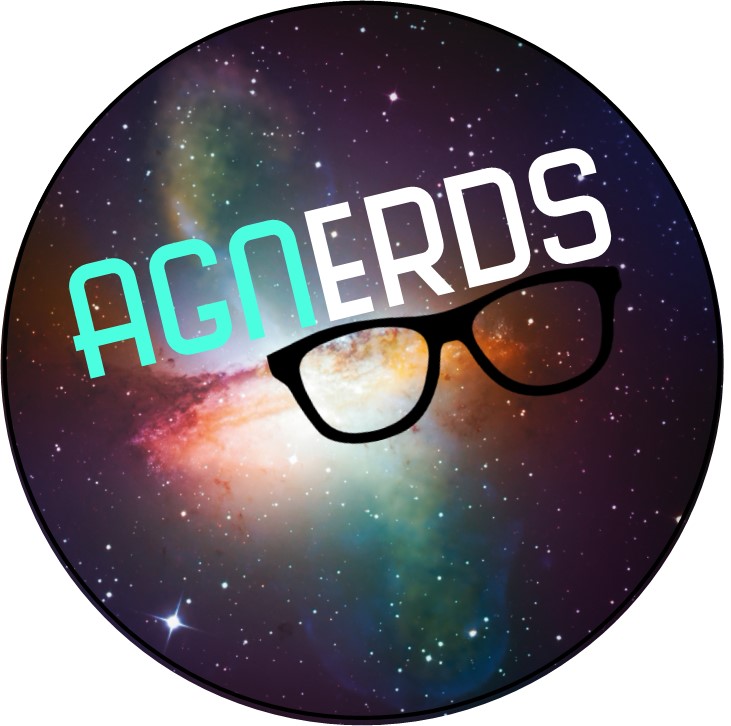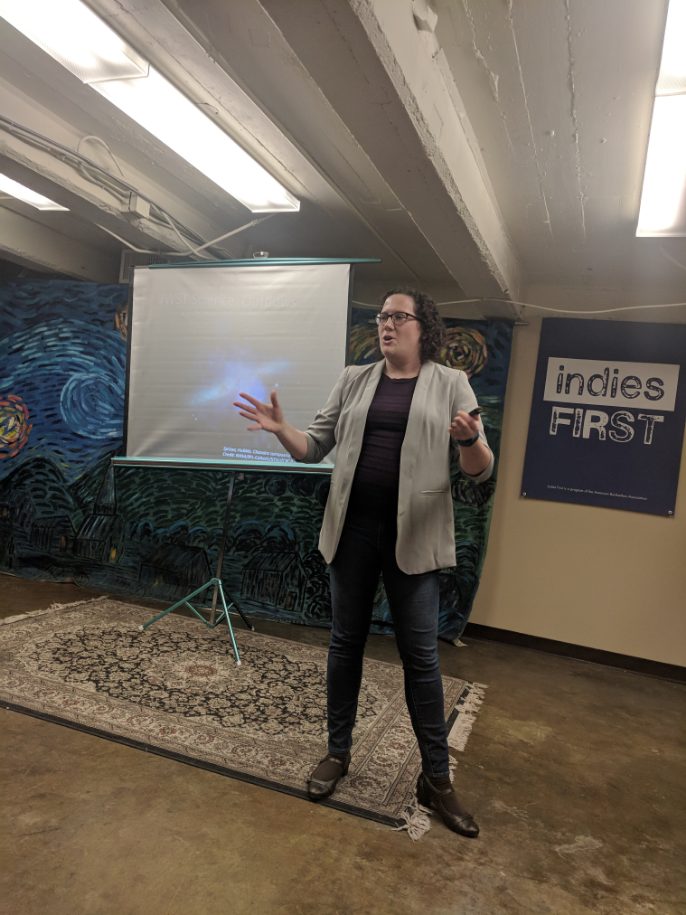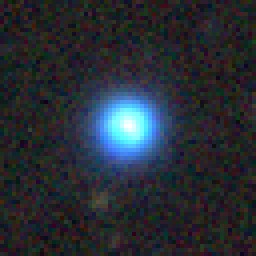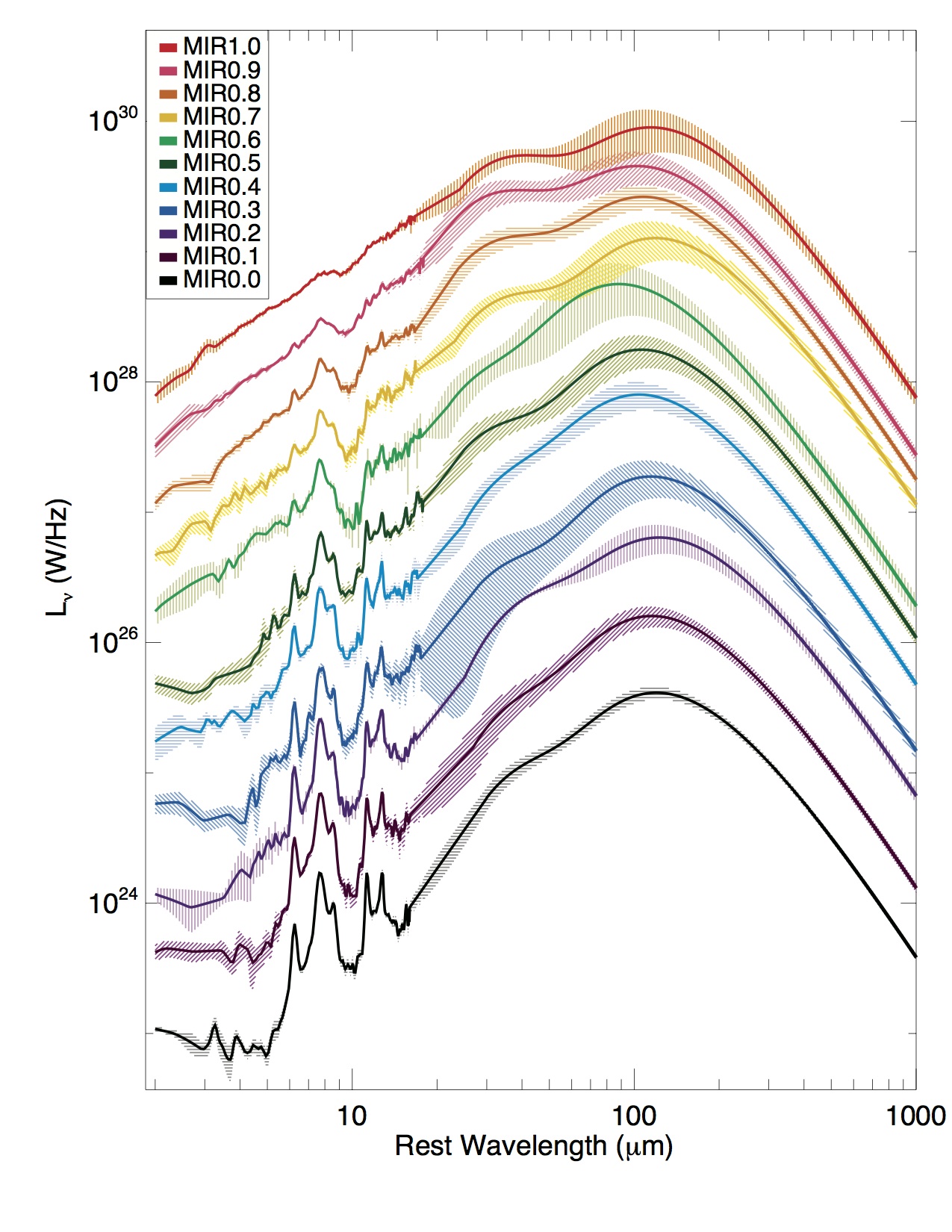Research Overview: Uncovering Hidden Monsters
All big galaxies host a supermassive black hole at their centers, more than a million times the mass of our Sun. These monsters are often lurking unseen behind thick blankets of dust. I use space telescopes to uncover the secrets at the centers of galaxies in the distant universe, 7-10 billion years in the past. This is an epoch in which galaxies have ample fuel for forming new stars and feeding their black holes. I research how these monsters grow and what impact they have on their host galaxies. I am anxiously waiting for the unprecedented look into the lives of these hidden monsters that will be revealed with the launch of NASA's next flagship mission, the James Webb Space Telescope, in 2021.
See some research highlights below.
Full list of publications on NASA/ADS.
Cold Quasars
A cold quasar is a very active supermassive black hole whose host galaxy still has a lot of cold gas in it. The quasar itself is blue, unobscured, and X-ray luminous. The host galaxy is only seen in the IR. These are some of the rarest quasars, comprising a mere 4% of the unobscured, quasar population.
Image from Kirkpatrick et al. (2020) and the DECal Legacy Surveys.
Learn MoreDusty Galaxy Templates
Publicly available templates based on how much the AGN continuum contributes to the mid-IR luminosity (0.0 means no contribution, 1.0 means 100% of mid-IR luminosity is due to continuum emission). These are ideal for use with z=0.3-2.8 IR sources.
Figure from Kirkpatrick et al. (2015)
Learn MoreColor Selection with the James Webb Space Telescope
The Mid-Infrared Instrument (MIRI) on JWST will greatly improve our ability to detect hidden AGN galaxies with colors alone, due to the filters' sensitivity to the PAH features.
Figure from Kirkpatrick et al. (2017b)
Learn MoreInclusion and Equity Efforts
I believe that every student has a right to a quality education and access to research opportunities regardless of gender, ethnicity, race, socioeconomic background, ability, or religion. It is inherently right that all students should have the support to pursue whatever career path they choose, regardless of their identity or background. I strive every day to make our field, my department, and my university a welcoming and safe space for all students.
Science progresses because of ideas and problem-solving. In modern science, ideas are largely generated through team work—the lone genius scientist trope no longer exists. Science as a group endeavor requires diversity of thought—approaching the problem from many angles. And diversity of thought arises out of diversity of life experiences. When we broaden our perspectives through diversity, we do better science. It is the moral responsibility of the people who wield power in our field to make our field safe and accessible for all.
My specific contributions include chairing our department's newly founded Diversity, Equity, and Inclusion Committee. The DEI Committee is working to improve a sense of welcoming for all undergraduates in the department, and we are committed to ensuring equitable graduate admissions practices. I also am the faculty liaison for the Diversity in Physics group, which has regular meetings to socialize, talk about issues in the field, and outreach to the community. Finally, I am the Co-Director for the university's Multicultural Scholars Program, where I provide mentoring and professional development opportunities for underrepresented students majoring in the natural sciences.
Diversity in Physics Multicultural Scholars ProgramRead more about how KU students are contributing to our understanding of active galactic nuclei.

Activities and assignments that I have created for my classes, shared for public use.




